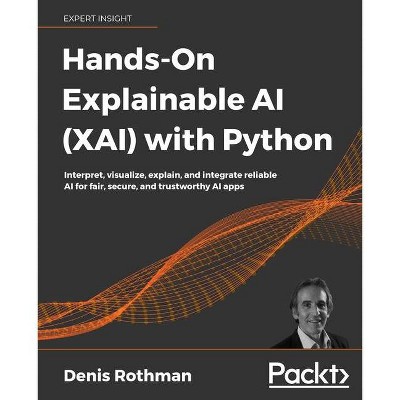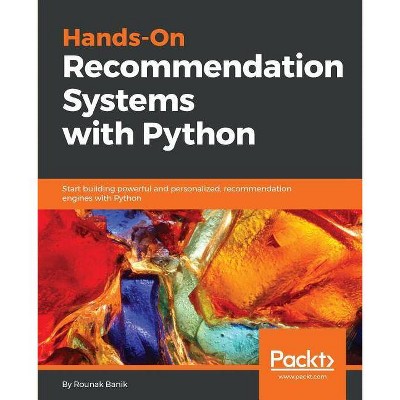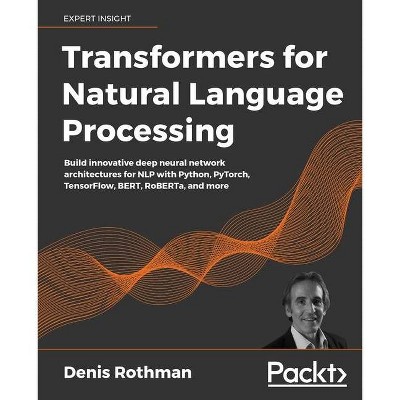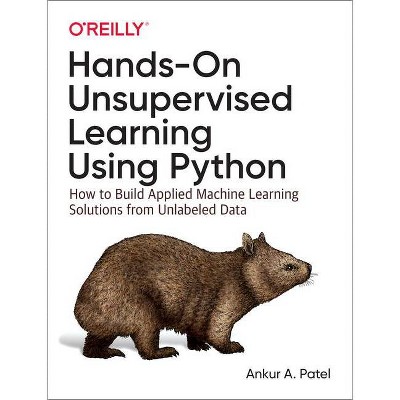Hands-On Explainable AI (XAI) with Python - by Denis Rothman (Paperback)

Similar Products
Products of same category from the store
AllProduct info
<p/><br></br><p><b> About the Book </b></p></br></br>In today's era of AI, accurately interpreting and communicating trustworthy, fair, and secure AI findings have become a crucial skill to master. This book bridges the gap between AI's pitfalls and potential by helping you build the ability to leverage machine learning with Python to visualize and integrate AI.<p/><br></br><p><b> Book Synopsis </b></p></br></br><p><strong>Resolve the black box models in your AI applications to make them fair, trustworthy, and secure. Familiarize yourself with the basic principles and tools to deploy Explainable AI (XAI) into your apps and reporting interfaces.</strong></p><p><strong>Key Features</strong></p> <ul> <li>Learn explainable AI tools and techniques to process trustworthy AI results</li> <li>Understand how to detect, handle, and avoid common issues with AI ethics and bias</li> <li>Integrate fair AI into popular apps and reporting tools to deliver business value using Python and associated tools</li> </ul> <p><strong>Book Description</strong></p> <p>Effectively translating AI insights to business stakeholders requires careful planning, design, and visualization choices. Describing the problem, the model, and the relationships among variables and their findings are often subtle, surprising, and technically complex.</p> <p>Hands-On Explainable AI (XAI) with Python will see you work with specific hands-on machine learning Python projects that are strategically arranged to enhance your grasp on AI results analysis. You will be building models, interpreting results with visualizations, and integrating XAI reporting tools and different applications.</p> <p>You will build XAI solutions in Python, TensorFlow 2, Google Cloud's XAI platform, Google Colaboratory, and other frameworks to open up the black box of machine learning models. The book will introduce you to several open-source XAI tools for Python that can be used throughout the machine learning project life cycle.</p> <p>You will learn how to explore machine learning model results, review key influencing variables and variable relationships, detect and handle bias and ethics issues, and integrate predictions using Python along with supporting the visualization of machine learning models into user explainable interfaces.</p> <p>By the end of this AI book, you will possess an in-depth understanding of the core concepts of XAI.</p> <p><strong>What you will learn</strong></p> <ul> <li>Plan for XAI through the different stages of the machine learning life cycle</li> <li>Estimate the strengths and weaknesses of popular open-source XAI applications</li> <li>Examine how to detect and handle bias issues in machine learning data</li> <li>Review ethics considerations and tools to address common problems in machine learning data</li> <li>Share XAI design and visualization best practices</li> <li>Integrate explainable AI results using Python models</li> <li>Use XAI toolkits for Python in machine learning life cycles to solve business problems</li> </ul> <p><strong>Who this book is for</strong></p> <p>This book is not an introduction to Python programming or machine learning concepts. You must have some foundational knowledge and/or experience with machine learning libraries such as scikit-learn to make the most out of this book.</p> <p>Some of the potential readers of this book include: </p> <ol> <li>Professionals who already use Python for as data science, machine learning, research, and analysis</li> <li>Data analysts and data scientists who want an introduction into explainable AI tools and techniques</li> <li>AI Project managers who must face the contractual and legal obligations of AI Explainability for the acceptance phase of their applications</li> </ol>
Price History
Price Archive shows prices from various stores, lets you see history and find the cheapest. There is no actual sale on the website. For all support, inquiry and suggestion messages communication@pricearchive.us




















